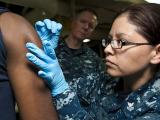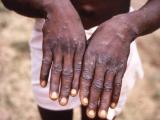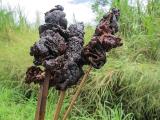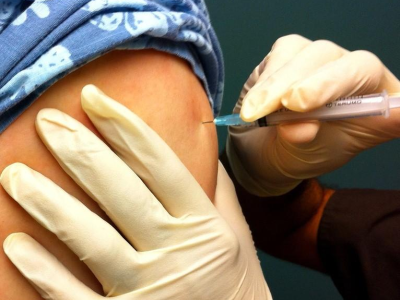Jun 5, 2006 (CIDRAP News) – At the World Health Organization's (WHO's) recent annual meeting, member states couldn't agree on a new date for destroying the world's remaining collections of smallpox virus and handed the issue off to the WHO Executive Board.
"After prolonged discussion of the destruction of variola [smallpox] virus stocks, it was decided to refer the proposed draft resolution to the Executive Board at its 119th session for consideration," the WHO said in a report on the annual meeting. The board session is scheduled for next January.
Known stocks of smallpox virus are held by the United States and Russia. The WHO has postponed dates for destroying the collections several times since smallpox disease was eradicated in the late 1970s. Many experts fear that terrorists may have supplies of the virus. The known stocks have been maintained to permit research on smallpox vaccines and treatments in view of concern about the risk of bioterrorist attacks.
The WHO released no details on the discussions of a working group on the smallpox issue at the Geneva meeting in late May. But the Sunshine Project, a nonprofit organization that works to ban biological weapons, said the discussions generally pitted the United States and Russia against a group of developing countries that wanted to set 2010 as the date for destroying the virus stocks.
Namibian officials, speaking on behalf of 46 African countries, said those countries were concerned about the safety and security of the smallpox virus stocks, according to the Sunshine Project report. To allow time to complete current research, the African group proposed June 2010 as the destruction deadline, the report said.
The African group also advocated changing the composition of the WHO Advisory Committee on Variola Virus Research to make it more broadly representative, the Sunshine Project reported.
The United States and Russia generally opposed the African proposal, with the US proposing only a "major review" of the issue in 2010, according to the Sunshine Project. But the Americans did accept the need for some changes in the advisory committee. The report said some diplomats described the mood in the working group as turning "ugly" at times.
A May 27 Reuters news report also suggested that the discussions were intense. The story quoted the chair of the working group, Suwit Wibulopolprasert of Thailand, as saying, "We have worked through several meetings—inside the room, outside the room, in front of the elevator, even in the restroom." But he gave no details on the sticking points.
The Sunshine Project report said the working group finally decided to recommend that a draft resolution including the 2010 destruction date be submitted to the WHO Executive Board. This proposal was adopted at the closing plenary session of the WHO meeting, the report said.
See also:
WHO report "Outcome of the Fifty-ninth World Health Assembly"
http://apps.who.int/gb/archive/pdf_files/EB118/B118_2-en.pdf
May 27 WHO news release on results of the annual meeting
http://www.who.int/mediacentre/news/releases/2006/wha03/en/index.html
Sunshine Project report on the WHO discussions on smallpox virus
http://www.smallpoxbiosafety.org/papers/WHAvariola2006.pdf
Feb 15, 2002, CIDRAP News story "Wide range of smallpox research efforts cited in WHO decision to retain virus stocks"
http://www.cidrap.umn.edu/cidrap/content/bt/smallpox/news/whoboard.html
















